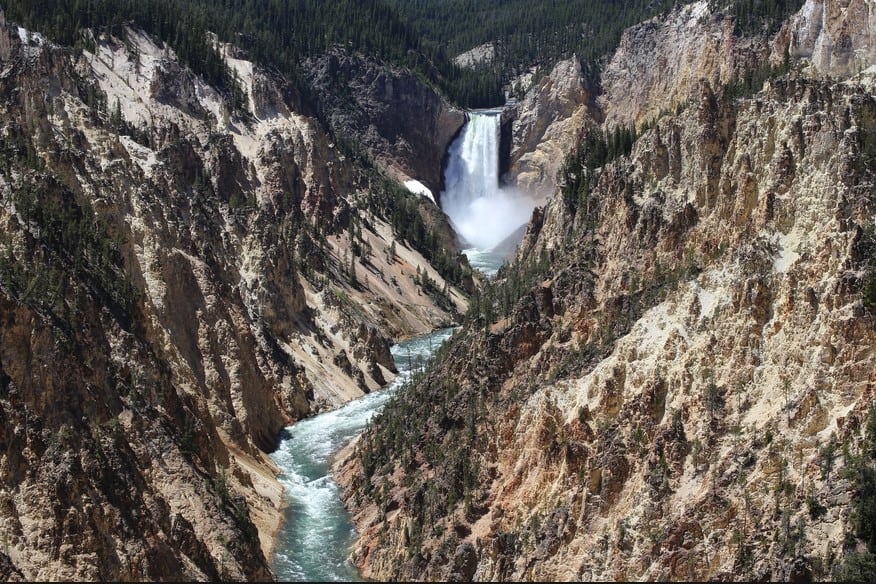Since finishing up my extraordinary summer season as a park ranger at Yellowstone I find I have a lot of free time bouncing around in my head. I also realize that here in southern Utah I am surrounded by truly amazing geology and nearly endless hiking opportunities. I love the desert! Still, there is that irresistible tendency to enjoy a daydream or two of past travels and future adventure possibilities…
For some reason I have always been drawn to the Canadian Rockies, like a rose waiting to be plucked and worn in my hair. I do not pretend to know much about the geology of the Canadian Rockies, but that in no way diminishes the fascination these rocks hold for me. I have been there twice in the past six years, to Yoho, Jasper, and Banff National Parks, and it isn’t nearly enough to satisfy me. I’ve got to get back to these awesome rocks. With mountains like this, can you blame me?
|
| Isoclinal folding photographed in the rain |
The above two photos were taken on my last trip in 2008 when I was travelling with two acutely geology–crazed friends. I had hiked trails in Banff and a glacier in Jasper, and been a volunteer assistant guide on a hike to the Walcott Quarry in Yoho with the Burgess Shale Geoscience Foundation. We were on our way home to Utah, heading south from Canmore, Alberta on densely forested Highway 40 through
Peter Lougheed Provincial Park in Kananaskis Country. It was a gray, drizzly early morning as my car’s windshield wipers knocked a squeaky beat with the monotonous drone of tires rolling on asphalt. My friends were just ahead on the wet, winding road. Somewhere we paused for a moment to watch a small grizzly ignore us as it fed by the side of the highway, but sadly it appeared there would be little other opportunity for any final sightseeing on this part of the trip. It was just too foggy.
But then through the misty towering evergreens this jagged mountain thrust itself into view, totally taking my breath away. I nearly drove off the pavement and into the trees; I was absolutely awestruck by the sight of these seriously uplifted, tightly folded rock layers. It had to be among the most captivating scenes I had ever witnessed. I slammed on my brakes to pull over to the shoulder while my friends sailed onward, disappearing around a bend in the highway.
What circumstances in the Earth’s crust resulted in these rock layers shooting skyward like this? Over the few intervening years since those amazing journeys, the thoughts and ideas that I had assembled about Canadian geology have become a bit fuzzy. Nevertheless, as the person guilty of starting this thread I will gladly drag out my images and maps and reference books, along with a journal I kept, and try to (once again) wrestle some sense out of it all. And so, over the next who–knows–how–long, we will peer back into the past six years (or will it be at least 500 million years?) and continue our sojourn into the spectacular Canadian Rockies.






